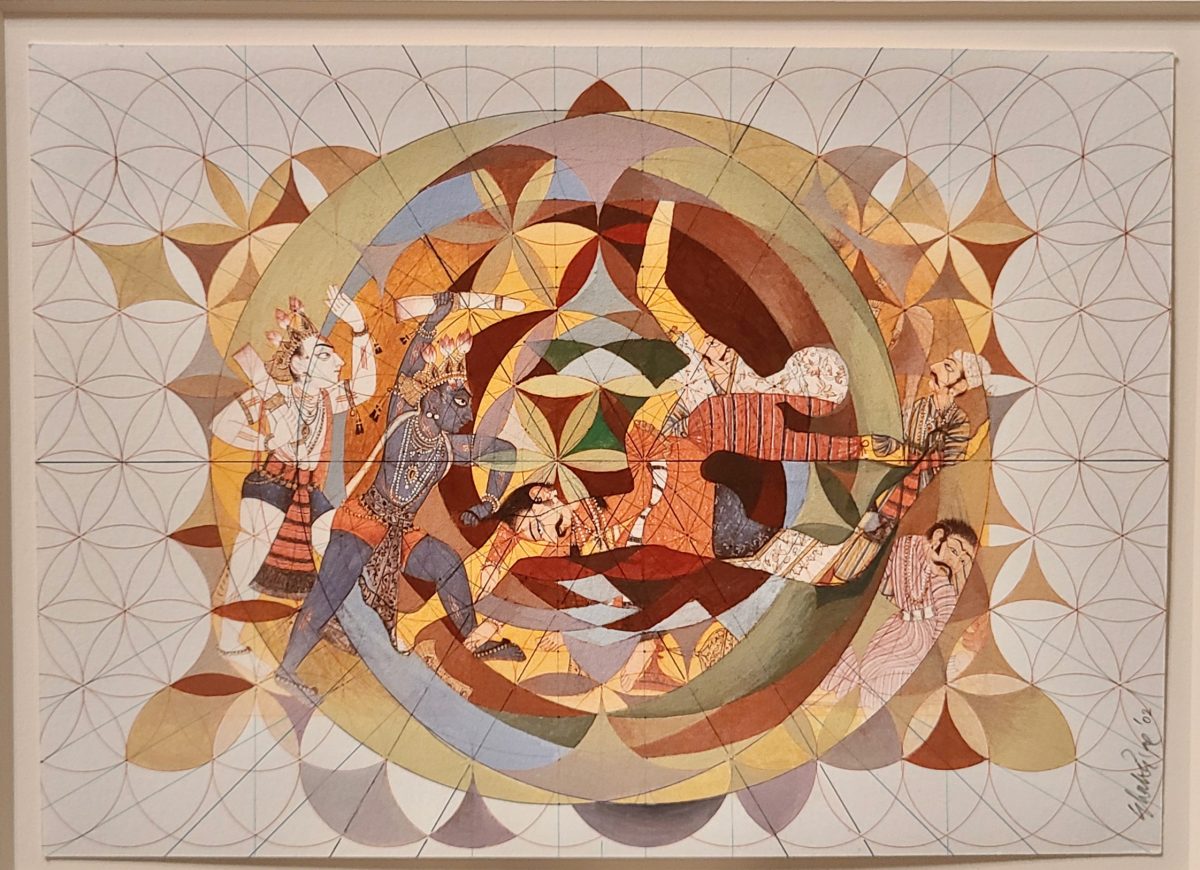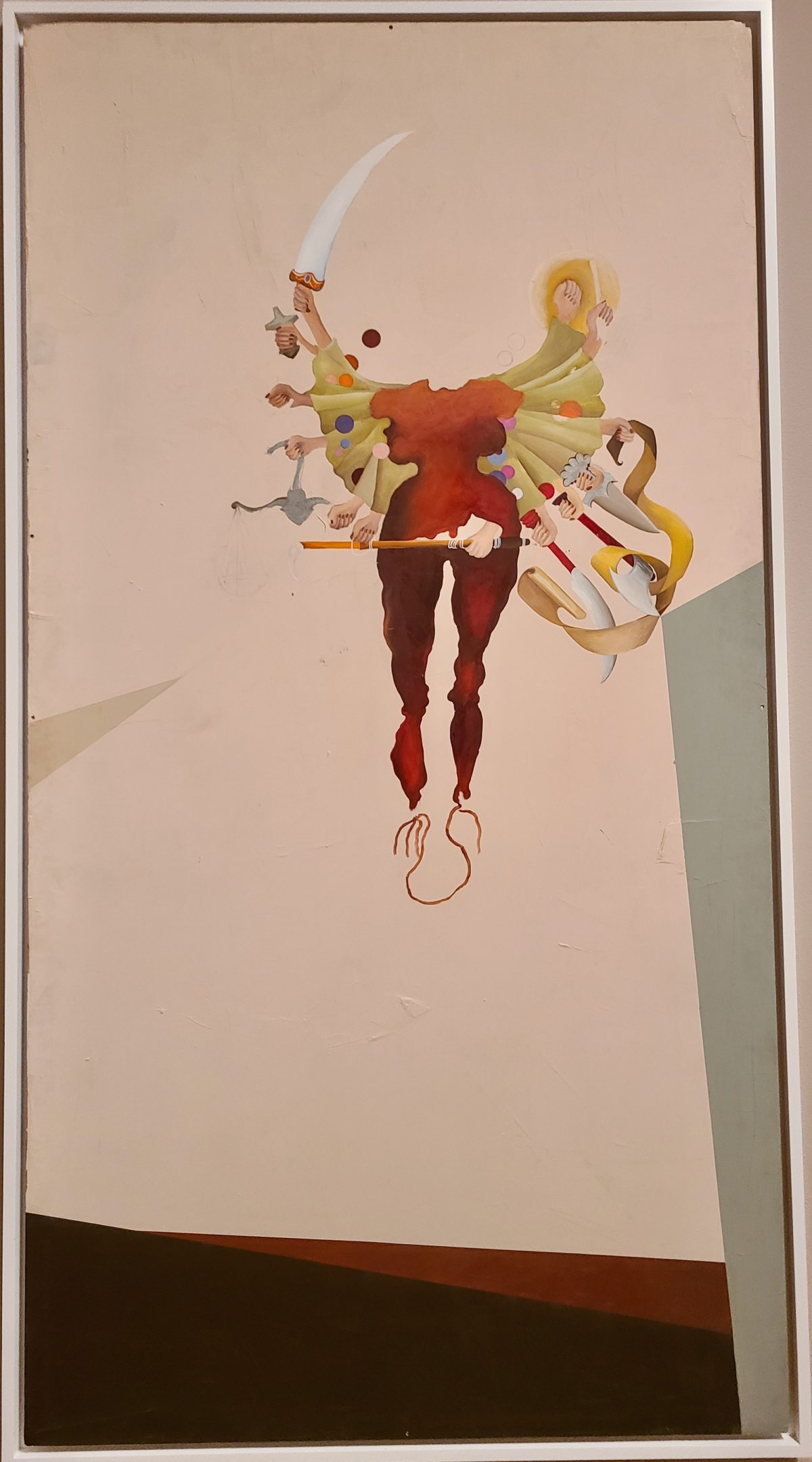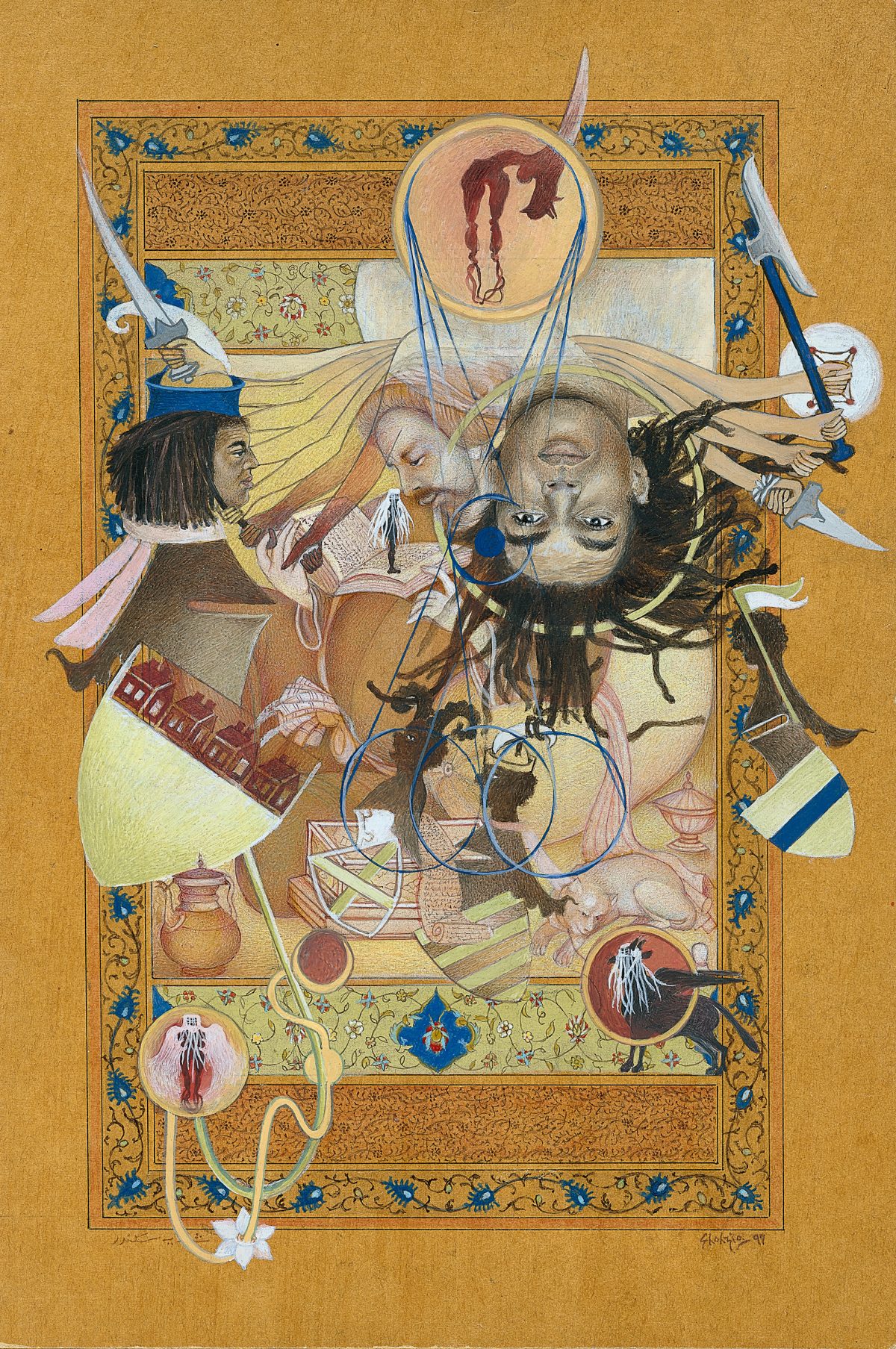
There is a kind of glyph — a kind of figure that while rooted in life, has been made to morph into an abstract form — in the upper left corner of the piece “Epistrophe” (2021), a piece that is composed of fluid gouache and ink drawings on tracing paper, that feels to me like a map key for Shahzia Sikander’s whole exhibition at the Morgan Library and Museum. It’s a recurring motif in her work: a clearly feminine figure with no arms, an ample bosom above a pinched waist and then sizeable, curving hips that taper to legs and what are almost feet which here become a tangle of connected tendrils. Oriented on the horizontal as the figure is here, it almost resembles a pair of ovaries. In “Epistrophe,” which is actually an installation and the largest work in the show, the artist both subtly and forcefully makes clear that the heart of her exhibition, Shahzia Sikander: Extraordinary Realities, is her fascination with the ways in which women as imagined and imaginative beings can be immeasurable in their powers.
Thinking of this theme I’m reminded of the work of Elizabeth Catlett, Wangechi Mutu and Shoshana Weinberger who all embellish and exaggerate, deform and contort the conventional female form to make it uncultivated, unruly, and transgressive. The show covers the first 15 years of Sikander’s career, highlighting her work within the tradition of miniature or manuscript painting which she studied in Lahore, Pakistan (where she was born and raised), she also to my eye, belongs in this geneaology. However, she rarely ventures into sculpture. Sikander’s main tools are gouache, watercolor, and ink on paper. She can be lush with her spontaneity as she is in “Epistrophe,” and she can be rigorously precise as “Running on Empty” (2002) demonstrates. In the later piece, a multicolored, translucent silhouette of a genderless figure is laid over a swirl of male figures and the avatars of Hindu deities, all within a complicatedly patterned mosaic.

I really appreciate the pieces where she does both, as in “A Slight and Pleasing Dislocation” from 2001, an unfinished panel that was originally supposed to be part of a 50-foot mural Sikander was commissioned to make. The figure is headless, and many armed (possibly a kind of Durga) with the aforementioned tendrilled feet that has repeated appearances and various weapons and tools held in the 13 hands. This is a version of the woman who can be and do anything, the person who is incalculable. And in our popular culture, the person who is incalculable is assumed to be dangerous, and we both valorize and despise them for this. And people of color are particularly subject to this projection. According to the image caption, after 9/11 this figure seemed threatening to the commissioning agents and Sikander was asked to change it. She refused to and instead gave up the commission. In her work, and in her own lived life, Sikander demonstrates that her vision of women should not be proscribed or limited.

Throughout Extraordinary Realities, Sikander demonstrates a marvelous facility with pulling the tradition of miniature painting into other cultural contexts. The work that she made while on a fellowship in Houston at the Museum of Fine Arts from 1995–1997, for example “Eye-I-ing Those Armorial Bearings” (1989–1997), demonstrates how she absorbed and began to incorporate the cultural dynamics and specific histories that pertain to African Americans. In this work the head of artist Rick Lowe, founder of Project Row Houses in Houston, is shown upside down along with several icons and symbols from her own traditions — the reading scholar and the durga. She mixes in the Greek as well, as in the griffin shown in the lower right corner. The piece feels like she is trying to design a different kind of heraldry — one that might be the sign of her own particular house.

This show is also a way for the Morgan Library and Museum to expand what had for some time seemed to me to be a limited exhibition palette. I have known the institution to typically mount shows such as Guercino: Virtuoso Draftsman, as they did in October 2019, or Walt Whitman: Bard of Democracy, mounted in June of that same year. However, in the past two years, the Morgan has also exhibited Betye Saar: Call and Response and has an upcoming show of drawings by Black artists from the American South. This seems promising for putting the Morgan in the conversation pertaining to the issues of power, gender, ethnicity, agency, public recognition, and diversity.
Extraordinary Realities demonstrates that we can indeed play with our inherited traditional ways of looking when we find an artist who can transform them elegantly and powerfully with the cultivated facility of her hands.
Shahzia Sikander: Extraordinary Realities continues at the Morgan Library and Museum (225 Madison Avenue, Midtown, Manhattan) through September 26. This exhibition originated at the RISD Museum.
0 Commentaires